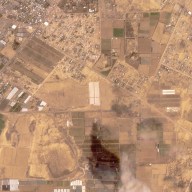On a Thursday night inside the Atrium, an indoor public space with a few eateries at 60 Wall St. where drifters often take refuge, a small group of Occupy Wall Street protesters plans its next move. This is the current state of the General Assembly, a collection of people that was once so large it needed to use a “human microphone” technique to make sure an entire crowd could hear the message of one speaker.
After the NYPD’s controversial eviction of Zuccotti Park in the early morning hours of Nov. 15, the movement began slowly shrinking and slipping from headlines, and approval dwindled with it. The most recent poll on public support for OWS was conducted by Rasmussen Reports in January — 51 percent of voters viewed protesters as a public nuisance at that point.
Now the movement fights for momentum and struggles for the same attention, as many are becoming increasingly detached, or simply fed up with the happenings of Occupy.
Protesters insist, though, that is about to change on May 1.
Occupiers have dubbed “May Day” a spring day of action, or rather, inaction. Protesters will encourage people to participate in a general strike, meaning no work, no school and no shopping. Activists are in motion now, trying to drum up support for a day that could prove key to revitalizing the movement.
“May 1 is going to be a moment where a growing large number of people will have the opportunity to realize what this country looks like when the 99 percent stand up and speak up and take a moment to reflect on where we are as a country,” said Justin Wedes, a protester who belongs to the movement’s media working group.
But will that day of action do anything to recapture the commitment, attention and passion once owned by the movement, especially now as protesters are without a public space to set up camp?
It’s not impossible, but it won’t be easy, some say.
“It remains up to the creativity and tenacity of the leadership of the movement,” said David Birdsell, a political science professor at Baruch College, who believes the future of Occupy will take new shapes. “There could be puckish digital attacks, occupying websites.”
If May Day proves a flop, Occupy will have to scramble to find new ways to reach people.
Birdsell suggested OWS use new tactics to garner news headlines again.
“Occupy art, occupy flash mobs, there are all kind of things they could do to rekindle attention,” he said.
Internal conflict brewing over purse strings
At its peak in November 2011, OWS had pockets so deep, it set up a nonprofit to control the estimated more than $500,000 it had accumulated, mostly through donations from supporters.
Today, though, protesters admit funding has become increasingly complex and difficult to track, especially troubling for a movement that boasts transparency. Part of that, they say, is because of the unorganized structure that has been the common theme of the movement since the beginning. While working groups are assigned to focus on specific tasks, there are often no appointed leaders or written records — and accounting is no exception.
There are rumblings within the movement that sloppy accounting has led to the opening of bank accounts that are vulnerable to theft. One protester who wished to remain anonymous told Metro that a few people who are in control of funds are suspected of stealing about $25,000 a month from the movement.
Metro found in its reporting that protesters could not give clear answers about how much money the movement has or where it is delegated, largely because most expense reports go unposted, leading to a virtually nonexistent paper trail.
“Access to financial information is tightly controlled by a small group who refuse to show any meaningful financial records,” said Monica McLaughlin, a member of one of several OWS accounting committees. “Because of these opaque controls, no one outside of this small group knows the exact dollar amounts of donations taken in since September, exactly how many bank accounts there are or what the money has been spent on.”
There are several websites and forums for OWS accounting, some of which have not been updated in months. One recent discussion thread on the New York City General Assembly’s website indicates some protesters are making efforts to increase transparency by setting guidelines for turning in bank statements and receipts.
Has OWS influenced policy?
OWS protesters say their movement has changed the political conversation, and indeed many Democratic politicians, ranging from the New York City Council to members of Congress, have co-opted Occupy Wall Street’s popular “We are the 99 percent” mantra.
But Occupy Wall Street has yet to make a tangible difference in policy-making, WNYC’s political analyst Joyce Purnick argues.
Purnick, a former New York Times metro reporter and author of “Mike Bloomberg: Money, Power, Politics,” said unlike their counterpart the Tea Party, Occupy Wall Street has not succeeded in electing candidates to Congress or to other political offices.
For a movement that boldly declares it supports no political party or leader, making visible change within the system has proven challenging.
And, while events like May Day may offer a boost of momentum, it may not translate into real change, she warned.
“You have to be able to have a political impact and know how to have an influence on the political establishment,” Purnick said. “I think they can only go so far.”
Timeline of OWS
— September 17 About 1,000 people show up with the intent of “occupying” Wall Street, but take to nearby Zuccotti Park after police barricade Wall Street
— September 24 NYPD Officer Anthony Bologna used pepper spray on protesters who appeared to be peacefully marching through Lower Manhattan. The widely-publicized incident helps attract mass support for protesters’ cause. The NYPD launched investigation into Bologna’s actions.
— Sept 30 1,000 demonstrators including labor members, march to NYPD headquarters.
— October 1 Protesters march across Brooklyn Bridge. More than 700 arrested.
— October 3 Protesters wear zombie costumes during a march to represent mindless corporate drones.
— October 5 Labor unions join protesters and thousands march from Foley Square to Zuccotti Park, police make numerous arrests.
— October 14 Brookfield Properties postpones cleaning Zuccotti Park after protesters declare they will link arms to prevent being pushed out.
— October 15 Protesters march to Times Square to protest money spent on foreign wars.
— October 26 Occupy marches in solidarity with Scott Olsen, an OWS member and veteran who was seriously injured by a projectile fired by police during a raid on Occupy Oakland.
— November 15 NYPD began evicting Zuccotti Park around 1 a.m. Many protesters, and some journalists, were arrested. Thousands of books from “The People’s Library” were seized and destroyed by the police, protesters say.
— Nov 17 30,000 people take to the streets in OWS’s “Day of Action;” dozens are arrested in clashes with police.
2012
— Jan 1 Police arrested 68 protesters who tried to reoccupy Zuccotti Park on New Year’s Day
— Jan 10 Hundreds of protesters re-enter the park after police barricades were removed. However, protesters were prohibited from sleeping or laying down
— March 14 Protesters rally outside the Waldorf-Astoria and hold a mock funeral procession to symbolize dying jobs in protest of a Mitt Romney fundraiser
Follow Metro local reporter Cassandra Garrison on Twitter
















